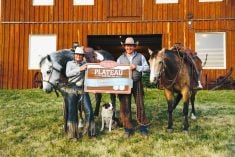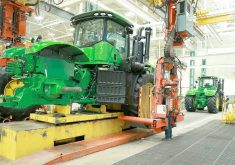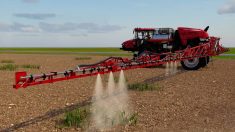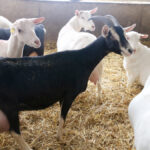Perhaps it has something to do with Premier Stelmach’s resignation, but government reports on the future of Alberta seem to be coming out of the woodwork. First it was the premier’s Council for Economic Strategy report, and now it’s the Alberta Competitiveness Council report.
In a previous column I noted that the premier’s council report had the astounding approach to basically ignore the second-largest economic driver in this province – that being agriculture. At least the competitiveness report had a five-page section on agriculture, albeit only on grains and oilseeds.
Read Also

Guarding against misinformation: Do you believe in house hippos?
Misinformation and disinformation run rampant in today’s digital age. Farmers must be wary of the digital dangers and know how to keep themselves safe.
That section had the usual boilerplate words and graphs about the importance and contribution of agriculture to the economy, but it did contain some overview recommendations, a number of which were not exactly new. First, it recommended that Alberta continue to pursue the termination of the Canadian Wheat Board (CWB) monopoly. Well, that has now become a reality. Time will tell, but killing the CWB is no guarantee for making grain growing any more competitive or profitable.
There is one certainty that is not mentioned and that will have a guaranteed impact on competitiveness and that is the reaction of American grain growers to new direct competition from Alberta. When the CWB is gone Canadian growers will start to flood northern U.S. border states grain elevators, and the inevitable American trade reaction will happen in the form of border restrictions. Wheat growers in particular will find out that without the CWB there will be no one with the expertise and finances to defend the Canadian position. Interestingly, the report does not recommend the establishment of a contingency fund to cover the costs of fighting U.S. border trade actions in the absence of the CWB. I suspect Alberta taxpayers will be on the hook for that inevitable situation.
In another section the report bemoans the production shortcomings of wheat and barley in comparison to canola, corn and soybeans. It lays the blame on the decreasing public support of plant breeding and suggests ways be found to increase more research. Not once does the report bring up the elephant in the room regarding plant breeding. The reason the aforementioned crops are roaring ahead of wheat and barley is because private seed genetics companies have been using genetic engineering (GE) to improve the productivity of corn, canola and soybeans. Wheat and barley will never significantly increase in productivity unless seed companies use GE to breed better varieties. Not once is that reality mentioned; the absence of that point is a glaring hole in the report. If the authors were opposed to GE wheat and barley they should have stated why and made the economic and competitive implications clear.
Import farmers
The report also suggests that to stem the decline in those actually growing grains and oilseeds, that efforts be made to encourage the immigration of farmers to Alberta. There is something missing in the thought process here, the reason we have fewer grain growers is that in order to make a living, existing growers have to constantly expand displacing those growers who are less efficient. Bringing in more immigrant farmers would see land prices increase as they need to acquire just as much or even more land in order to make a living at grain growing, but that by itself is unlikely.
The report states that most immigrant farmers acquire farms that produce supply-managed commodities. There is a message in that, immigrant farmers with money to invest choose that route because they know those are the only commodities that are consistently profitable and stable. Most immigrant farmers also come from highly intensive farming backgrounds in Western Europe. They prefer to produce what they know best, that being: dairy, horticulture, hogs, poultry, etc., extensive grain-growing operations are fairly unknown in that part of the world.
The report does support better risk-management programs for the grains and oilseeds sector. That’s an endless exercise and has a 40-year history in Canada and Alberta. I suspect the authors may be referring to the Alberta cattle price insurance program which has proved to be quite successful and at this point appears actuarially sound without massive taxpayer support. That program will be expanded into hog production next and there is no reason not to consider it for other sectors.
The use of “incubator farms” is also suggested by the report. That’s a concept that is not entirely understood particularly at the primary production level. It’s a concept that shows promise but it needs to be fleshed out better as to who, how and why it would benefit the industry.
As industry reports go this ranks as one of the better ones notwithstanding some of the aforementioned holes. I suspect it could also serve as a good agriculture policy election platform for the PC Party at the next election. That would be a step up from previous elections where agriculture policy was generally ignored because those citizens involved in the ag industry were considered captive voters by all political parties.
———
Timewilltell,butkillingtheCWBisnoguaranteeformakinggraingrowinganymorecompetitiveorprofitable.














